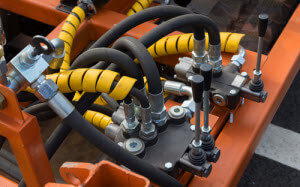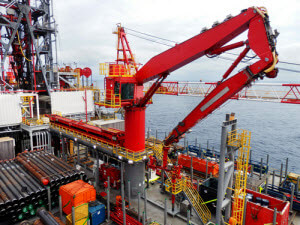How Does a Hydraulic System Work? O-Seal Trusted by the Navy
Hydraulic systems can be found in everything from cars to industrial machinery. They’re designed to provide power, control, safety, and reliability, but how does a hydraulic system work?
How Does a Hydraulic System Work?
 Hydraulic systems are made up of numerous parts:
Hydraulic systems are made up of numerous parts:
- The reservoir holds hydraulic fluid.
- The hydraulic pump moves the liquid through the system and converts mechanical energy and motion into hydraulic fluid power.
- The electric motor powers the hydraulic pump.
- The valves control the flow of the liquid and relieve excessive pressure from the system if needed.
- The hydraulic cylinder converts the hydraulic energy back into mechanical energy.
There are also numerous types of hydraulic systems, but each contains the same main components listed above. They’re also all designed to work the same way.
Hydraulic systems use the pump to push hydraulic fluid through the system to create fluid power. The fluid passes through the valves and flows to the cylinder where the hydraulic energy converts back into mechanical energy. The valves help to direct the flow of the liquid and relieve pressure when needed.
Hydraulic Systems on Ships
 In addition to vehicles and industrial machinery, hydraulic systems can be found on ships. Hydraulic systems on ships are used in various applications. For example, systems used for cargo systems make carrying heavy materials and performing other cargo operations easier and less time consuming.
In addition to vehicles and industrial machinery, hydraulic systems can be found on ships. Hydraulic systems on ships are used in various applications. For example, systems used for cargo systems make carrying heavy materials and performing other cargo operations easier and less time consuming.
A ship’s engine room also includes hydraulic systems such as a hydraulic automatic control system. These help to regulate valve positions as well as the pneumatic air pressure in the engine room.
On top of that, hydraulic systems in a ship’s stabilizers prevent the vessel from rolling and ensure a smooth performance across open waters.
Plus many industrial ships include machinery and tools like deck cranes that are run by hydraulic systems.
O-Seal Valves and Fittings and the Navy
Hydraulic systems can be found on many US Navy vessels. And with help from CPV Manufacturing and our line of O-Seal valves and fittings, these systems can ensure smooth operations and safety.
Our line of O-Seal products was developed in the 1950s when CPV Manufacturing started working with the US Navy. We wanted to make sure that every component of our high-pressure couplings met US Navy specifications. However, testing each connection would have been too strenuous and dangerous to do by hand. That’s when we created a test stand using O-ring connections.
This method allows us to easily disassemble and reassemble each component to perform each test to ensure proper performance and safety. We then took those concepts and developed our line of O-Seal products.
Benefits of O-Seal Valves and Fittings in Hydraulic Systems
CPV Manufacturing’s O-Seal valves and fittings are unique. Unlike other valves, our products are leakproof and designed to last. On top of that, they can withstand extreme temperatures and are rated for vacuum to 6,000 psi in liquid or gas applications, making them ideal for many types of hydraulic systems.
However, what makes our O-Seal valves truly unique is that they come with interchangeable parts. The soft goods in the cartridge can be removed and made with different types of materials for certain applications.
The versatility of our O-Seal products presents a cost-effective solution for the US Navy and many other companies across the globe. With interchangeable parts, our O-Seal valves can be used for a number of applications, which means companies no longer purchase additional valves to run their systems.
To learn more about our line of O-Seal products, contact CPV Manufacturing now.

